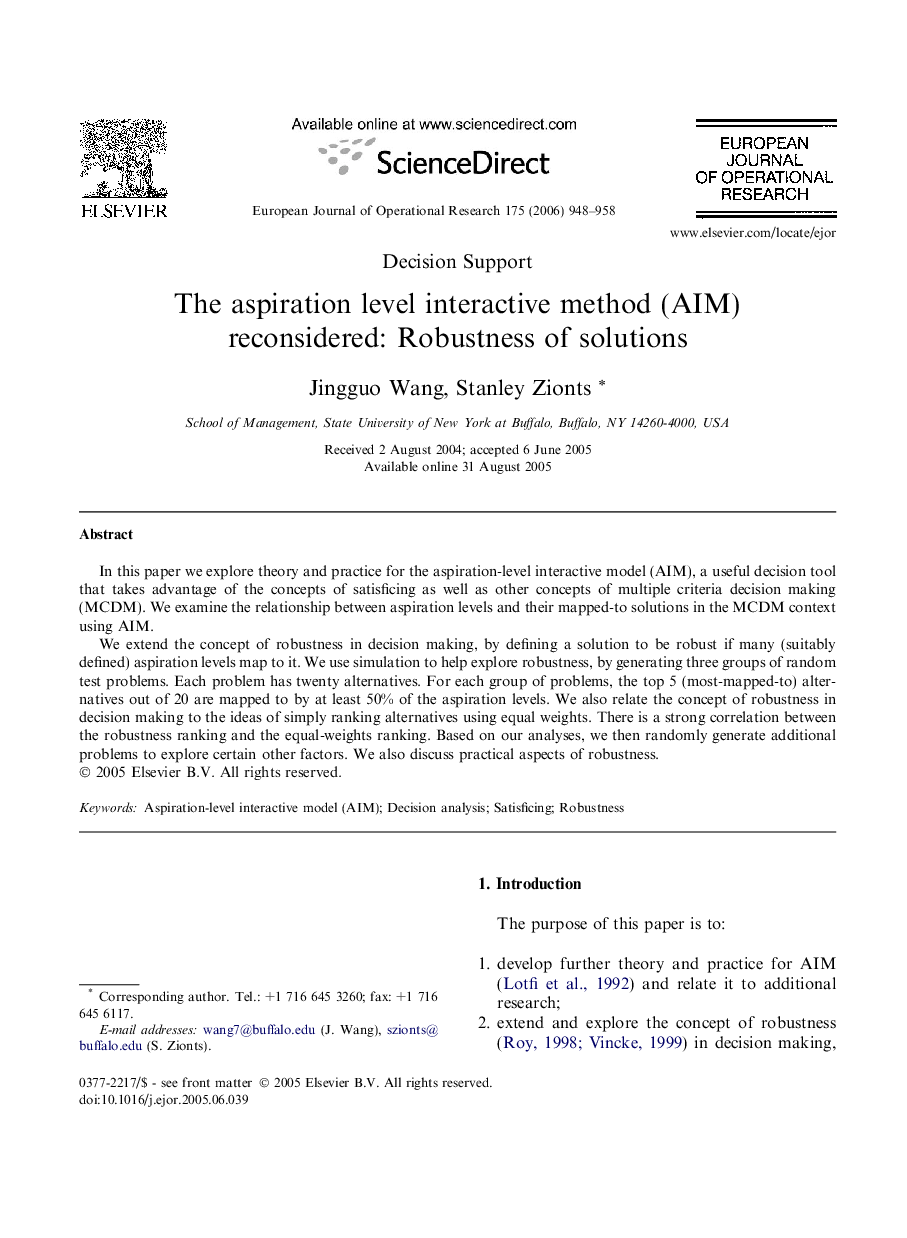| Article ID | Journal | Published Year | Pages | File Type |
|---|---|---|---|---|
| 482238 | European Journal of Operational Research | 2006 | 11 Pages |
In this paper we explore theory and practice for the aspiration-level interactive model (AIM), a useful decision tool that takes advantage of the concepts of satisficing as well as other concepts of multiple criteria decision making (MCDM). We examine the relationship between aspiration levels and their mapped-to solutions in the MCDM context using AIM.We extend the concept of robustness in decision making, by defining a solution to be robust if many (suitably defined) aspiration levels map to it. We use simulation to help explore robustness, by generating three groups of random test problems. Each problem has twenty alternatives. For each group of problems, the top 5 (most-mapped-to) alternatives out of 20 are mapped to by at least 50% of the aspiration levels. We also relate the concept of robustness in decision making to the ideas of simply ranking alternatives using equal weights. There is a strong correlation between the robustness ranking and the equal-weights ranking. Based on our analyses, we then randomly generate additional problems to explore certain other factors. We also discuss practical aspects of robustness.
